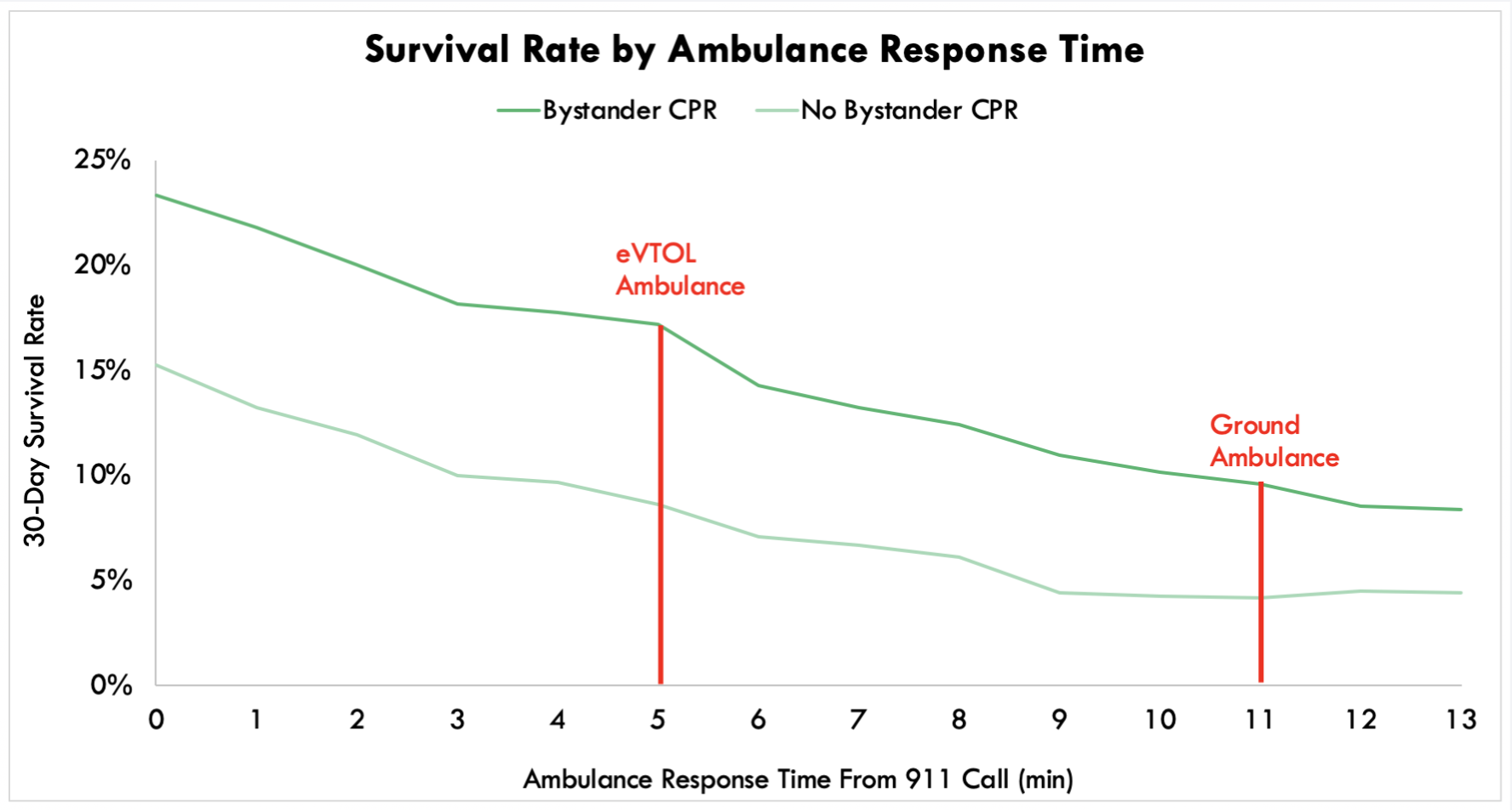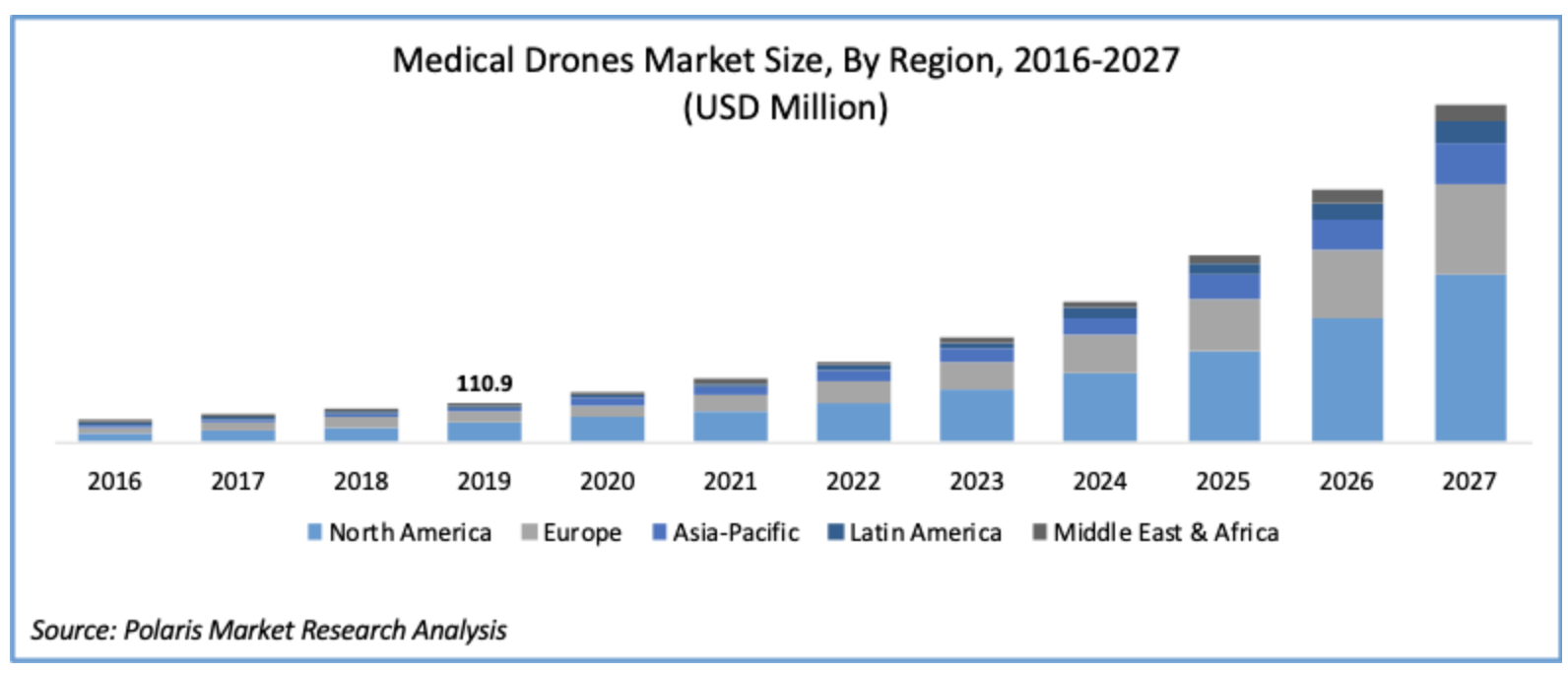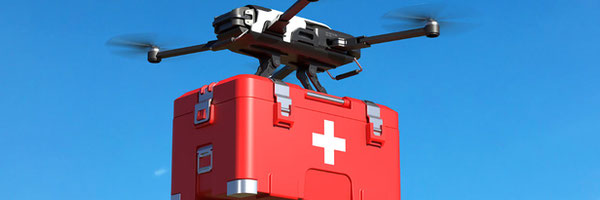Drones In The Future Of Healthcare
Grade 7
Presentation
No video provided
Problem
People are not getting quick access to an ambulance during a critical medical emergency or a life threatening situation for example a person has a severe allergy in the middle of a forest and no near by village or hospital, the person does not have quick access to medical care.
Method
Instead of waiting for traditional ambulance's, healthcare services have begun using ambulance drones reach the patient in a faster and efficient manner during an emergency or any medical event .
Research
What is an ambulance drone
An ambulance drone is a type of unmanned aerial vehicle (UAV)
When a very serious medical emergency occurs and the person needs immediate support ordinary ambulances take a longer time to reach the spot where as ambulance drones need a very short span of time to reach the spot and perform the very first treatment with the equipment’s packed ( Automated External Defibrillator, AEDs etc) making it easy to give rapid response care.
What are the benefits of ambulance drones.
Speed up response time
Ambulance drones can avoid traditional transportation barriers such as traffic jams and blocked roads. Due to their nature these drones can fly in a straight path to the patient instead of driving through congested roads. By using drones to respond to medical incidents, the team can transport equipment’s before the personnel arrive.
Reach difficult area’s
Emergencies often occur in remote areas that are far from small towns and hospitals. For instance a hiker has a severe allergy in the woods while hiking . It is very difficult traditional ambulances to reach and track where the person is and give medical treatment. Drones can reach much faster and navigate health professionals to come and have a higher chance of giving quicker medical attention to the patient. The drones can be very useful during large events or concerts in case someone has a heat stroke or has fainted.
Helps in digital transformation
Healthcare professionals are working on ways to improve the access to easy and faster medical attention, drones are also affordable and a viable option that professionals prefer.
Improve disaster response
Time's are constantly changing, which makes it challenging for healthcare teams to keep up with the medical threats for example COVID-19, where the healthcare providers are forced to run down on new methods to respond and treat numerous people in a rapid and effective manner.
Medical drone use case
In Toronto Drone Delivery Canada has formed an alliance with Milton District Hospital and Oakville Trafalgar Memorial Hospital. This route is used to transport medical supplies and samples such as
- Blood samples
- Serum tests
- Cytology containers
Data
This chart represents the response time and survival rate of a traditional ambulance and a medical drone

The chart shows that a medical drone approximately reaches the area in 5 minutes and the survival rate is 18% where as the ground ambulance respose time is 11 minutes and the survival rate only 12%. By using medical drones for the first aid 20,000 lives can be saved anually.
This chart represents the growing usage of medical drones

The growing usage of medical drones from 2018 to 2027 conveys that the opportunities for saving more lives is high.
Conclusion
The uses of ambulance drones are increasing in the world and healthcare units are working hard to make this the most preferred mode of medical access. This is the begining to a much faster and life saving means of healthcare.
Citations
- Iris Automation
- Drone life
- AirMed&Rescue
- Polaris Market Research
- Ark Invest
Acknowledgement
I would like to take this opportunity to express my gratefulness to my teacher for giving me this chance to work on this project and thanks to my parent's for supporting me during this project and providing me with ideas.

